Greg Liegey begins his career in Visual Effects in 1992 at Cinesite L.A. where he worked on such films as UNDER SIEGE 2, CONTACT or SPACE JAM. Then he worked as freelance at Sony Imageworks and ILM. In 2002 he joined the team of CIS Hollywood (now Method Studios) and work on films like MATRIX REVOLUTIONS and CONSTANTINE. As a VFX supervisor, he has worked on films like THE MUMMY: TOMB OF THE DRAGON EMPEROR, I AM LEGEND or FAST AND FURIOUS 4.
What is your background?
I’m from NYC and went to Pomona College in Claremont, CA for English Literature & Art History. I started working in Hollywood for Paramount Pictures in a development office and soon took a job at a fledgling Cinesite LA in 1992 through a friend’s connection, and have stuck with VFX ever since. I spent seven years at Cinesite working as a composite artist, then I freelanced at Sony Imageworks, Manex and ILM for three years. In 2002, I landed at CIS Hollywood working first as composite artist, then composite supervisor, and eventually visual effects supervisor… where I continue, though now we merged with Method & took on the Method moniker, Method Studios.
How did Method Studios got involved on this show?
As CIS Hollywood (at the time), we acquired the show because of the unfortunate circumstances of Asylum’s closing. Lionsgate brought us the show because of previous work with them we did in conjunction with our sister company Efilm.
How was the collaboration with director John Singleton?
Working with John is a pleasure. I’m happy to say that this was my second opportunity after working on 2 FAST 2 FURIOUS. John always keeps focus on the storytelling aspect of every shot. The details he wants in VFX shots are the ones which move the story along, even if that means stripping things out and simplifying.
What have you done on this show?
We had two main sequences and some miscellaneous shots.
The major sequence involved the catastrophic explosion of the protagonist Nathan Harper’s (Taylor Lautner) house. The background plates of the exploding house were shot as miniatures at Kerner Optical.
Can you explain to us the shooting of the miniature explosion?
// Note: This question are answered by Andy Foster, VFX Producer at Method Studios. He worked for Asylum during the miniature shoot.
From what I remember the miniature explosion was shot with 4 cameras at 72 fps. The camera positions for the miniature shoot were matched as closely as possible to the live action footage shot at the real location for the house.
For the aftermath we shot both vista plates and motion control matched to the angle and moves of the previously shot live action plates of the actors. The motion control moves were based on camera tracking data based on the live action plates themselves. The miniature house was at 1/4 scale. We shot multiple passes of the « aftermath » camera setups with varying degrees of smoke and residual fire to provide a wider assortment of elements for the comps.
The Kitchen was shot at 48 fps on full size set piece that consisted of the stove, it’s surrounding cabinets and a hold out shape for the bar at the entry to the kitchen. After the house and kitchen setups were complete we shot various generic smoke and falling fire ember elements.
VFX and Kerner worked back and forth seamlessly to lock in where all the camera positions would need to be placed on set. To help accomplish this a 3D scene of the set was built based on a combination of the miniature blueprints and provided measurements. Cameras were placed within the scene and than lined up to match the tracked live action shots that were currently in the cut. This allowed everyone involved to see the potential outcome of how the shots would be comped together before anything was actually shot. It also helped in spotting any potential difficulties with the suggested camera placements.
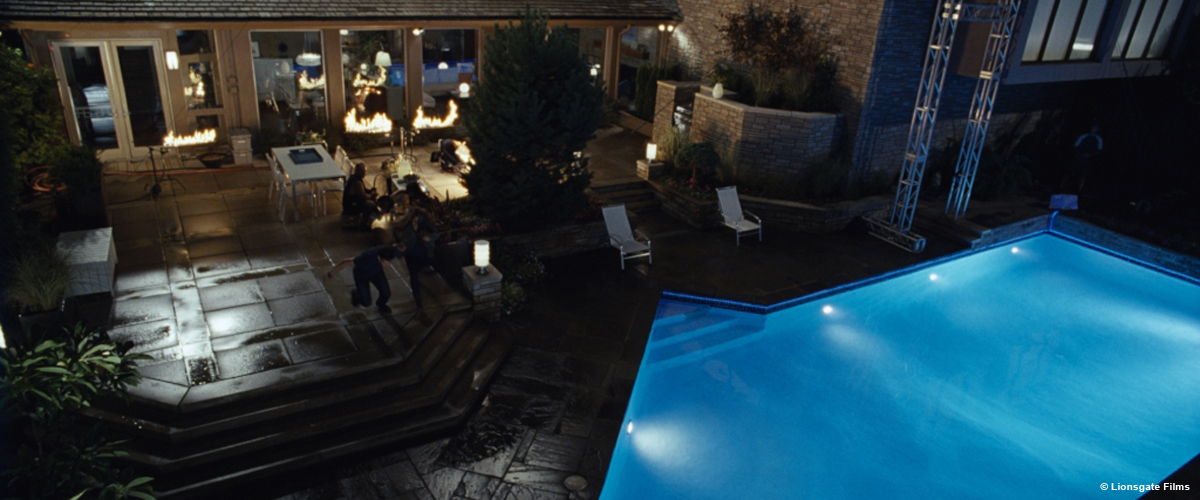 |
 |
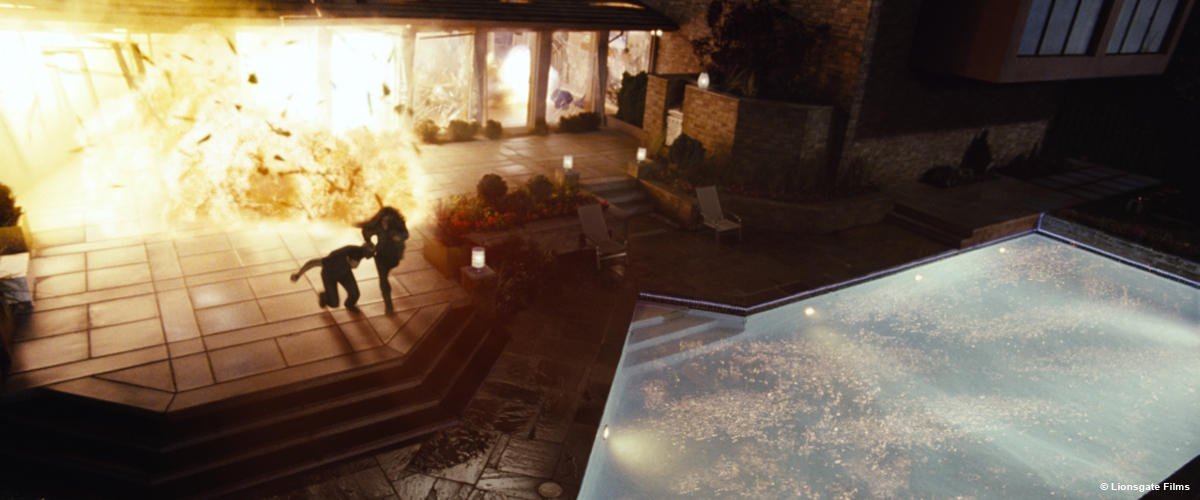 |
What was your feeling to work with miniatures? It’s something that is unfortunately becoming increasingly rare in VFX.
I’ve always liked working with miniatures. The physicality of miniatures gives them a presence which is often hard to duplicate using CG especially with slow camera movement or variable lighting such as fire. The way light interacts with an actual surface is both subtle and complex – very hard to duplicate exactly. The brain excels at discerning small anomalies in surface texture which are born out of necessary CG shortcuts. Which is not to say you can’t create absolutely wonderful CG – you can – but the best results require lots of time spent creating various depths of reality to fool the eye.
Can you tell us in detail how you put the miniature elements on live action plates?
We lined up the miniature plates with the live action plates for time sync which took a bit of give and take. In some shots, the miniature explosion was a couple frames too fast in its acceleration and in others a couple frames too slow. Nonetheless, it’s a tribute to the experience and expertise of Kerner Optical that the elements were tuned to the live action within that small range!
With timing sorted out, next we established the basic splits – the areas of transition from miniature to live action. The house miniature was detailed and a good match to the live action set, so that made things a lot easier. The trick is finding lines of demarcation which are a bit unexpected, so that the transitions can be meshed together without jarring segues. We had to pay special attention to blending the shading variations between miniature & live action as the explosion develops.
Lastly, we added additional layers of atmospheric elements to further blend the miniature & live-action worlds. Smoke, fires and floating embers bridge the elements and help connect them to each other by creating layers of depth which encompass everything.
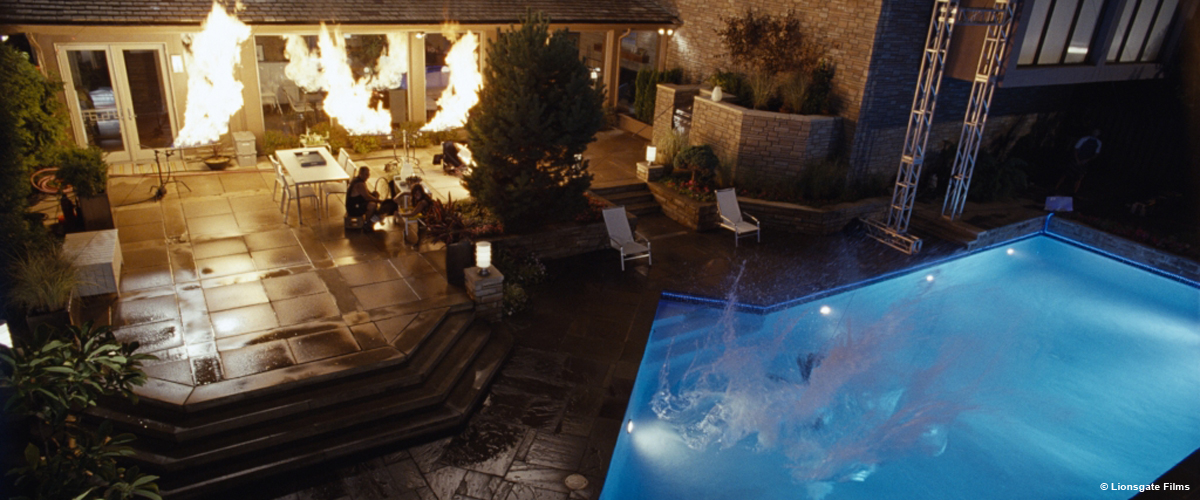 |
 |
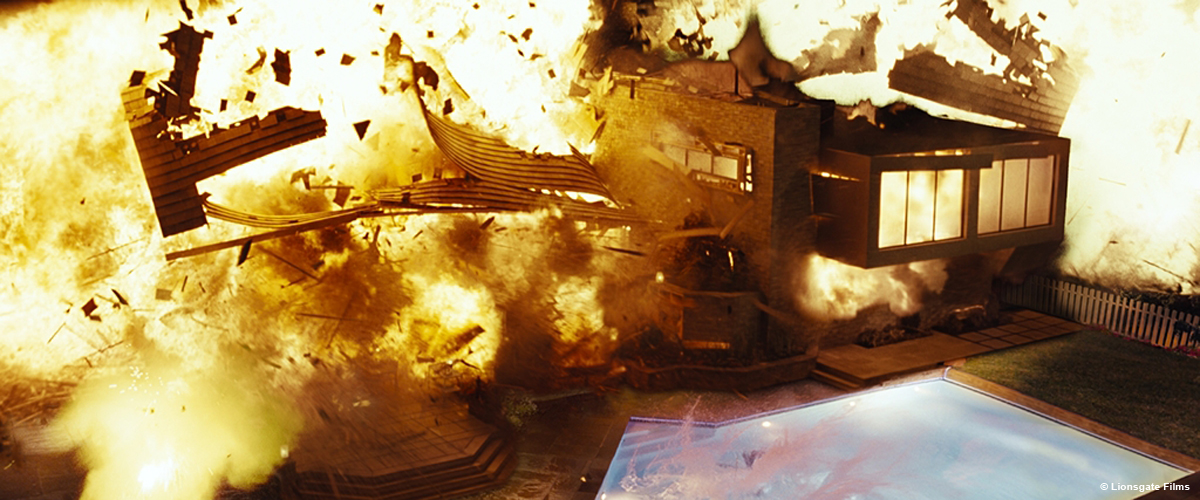 |
How did you manage the lighting and camera movements challenges?
Camera movement was tracked for both live-action and the miniature. Then we justified one to the other and locked them together. Using the 3D cameras, composite artist Kama Moiha placed additional layers of deep background on cards at the appropriate distance so that the parallax would sell the feeling of environment and distance for the shots where Nathan and Karen sat at pool’s edge while the house smoldered behind them.
Lighting was merged by hand placement of soft rotos & animated color corrections. We also added spot fires and their lighting effects on top of transition areas to help break up any obvious divisions between the two worlds.
Did you enhanced the explosion with CG elements like fire and props?
There were instances where composite artist David Rey added fireball elements to the miniature explosion footage to hide rigging, obscure undesirable debris or heighten the level of danger for the actors in the set piece. We also created specific, hero CG debris pieces in a number of shots to supplement the existing miniature debris. The hand-placed CG debris allowed us to fill in gaps and create a sense of increased menace to the live-action actors.
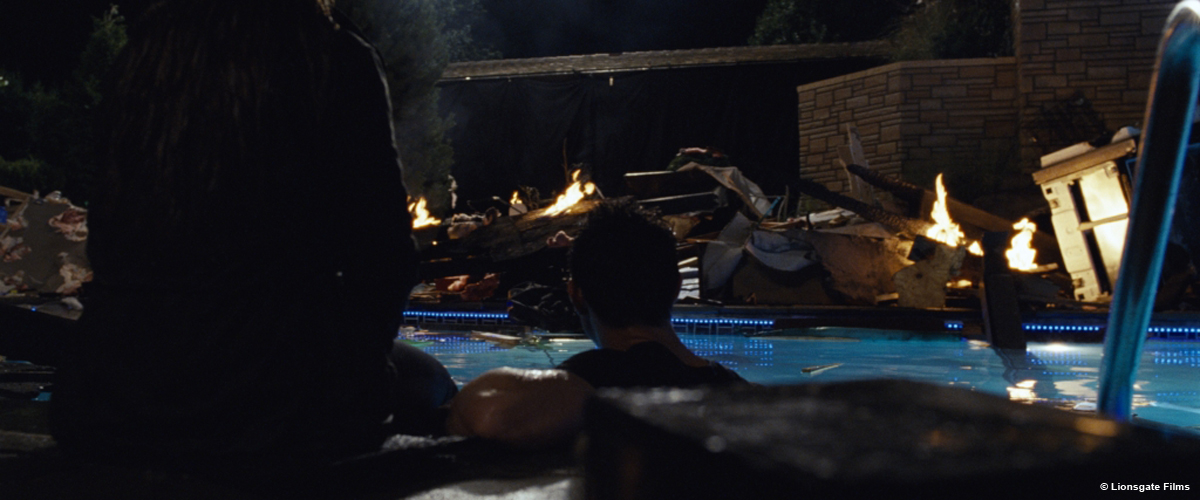 |
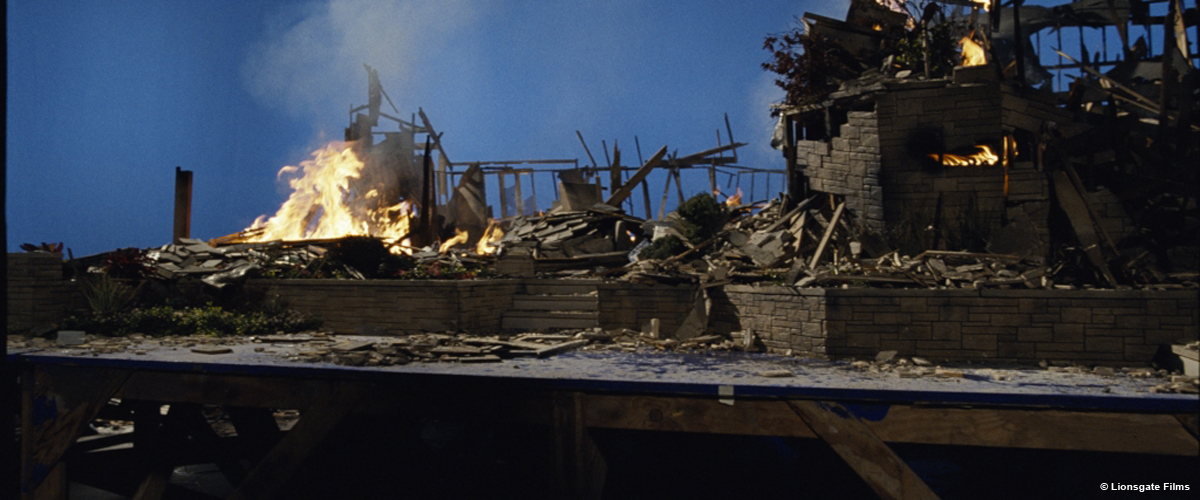 |
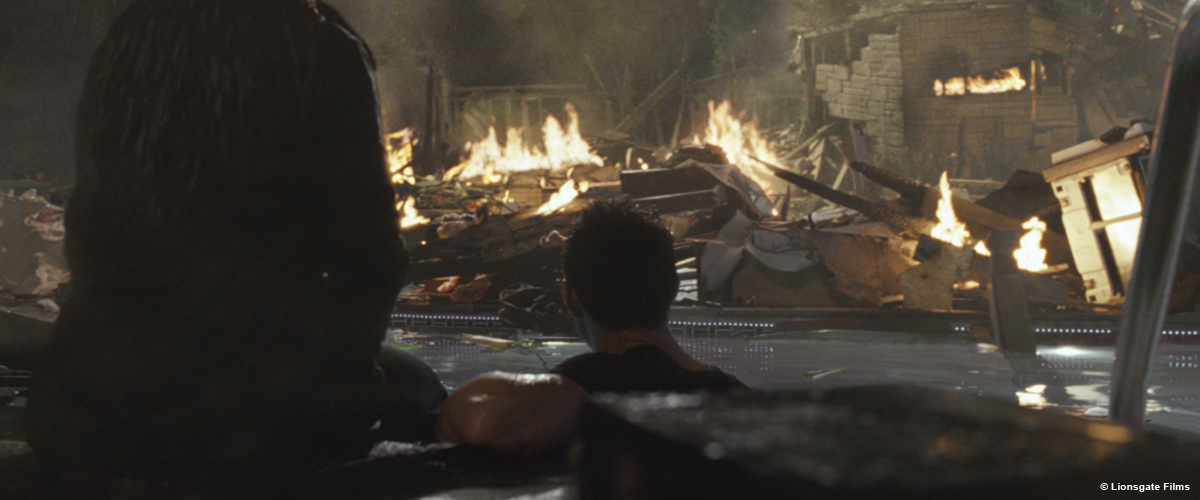 |
How did you create the water simulation?
We used two different types of effects simulations.
During the initial explosion, Aaron Schultz used RealFlow to create impact splash simulations. The CG splashes were needed to churn the practical pool surface to show impacts from various debris coming from the miniature house. They are subtle in the scheme of things, but go a long way in extending the feeling of destruction from the BG miniature to the FG live action plate. Without them, there were areas of relative calm in a frame full of action. We wanted to amp up the action everywhere.
In another instance, David Santiago used Houdini to create bubble simulations to enhance a large piece of the house plunging into the water. The original photography had a large practical chunk of debris chasing the actors into the pool, but since it was built to protect the actors, it looked a bit too safe and innocuous. David ran multiple iterations to get the velocity & acceleration feeling right – the difficulty was a routine one: the CG effects tended to look orderly & regimented compared to the chaotic reality which we needed. Using more than one pass helped mix up and obscure the systematic look of the CG and allowed the compositor, Kama Moiha, match the reality we wanted to portray.
What was the biggest challenge on this project and how did you achieve it?
The biggest challenge was getting representative temp versions of all the house explosion shots to editorial as soon as possible. We could tell early on that the sequence was extraordinarily difficult to edit since the effects were such a large part of the action in every shot. Without having a sense of the way the effects would play out made it tough to know how the shots would work together. Once we got temps together, we still had to work hard to improve certain aspects of timing to show that particular shots could work in the edit. Working closely with everyone in editorial, we were able to fine tune the effects shots to allow more latitude & possibilities in the cutting room.
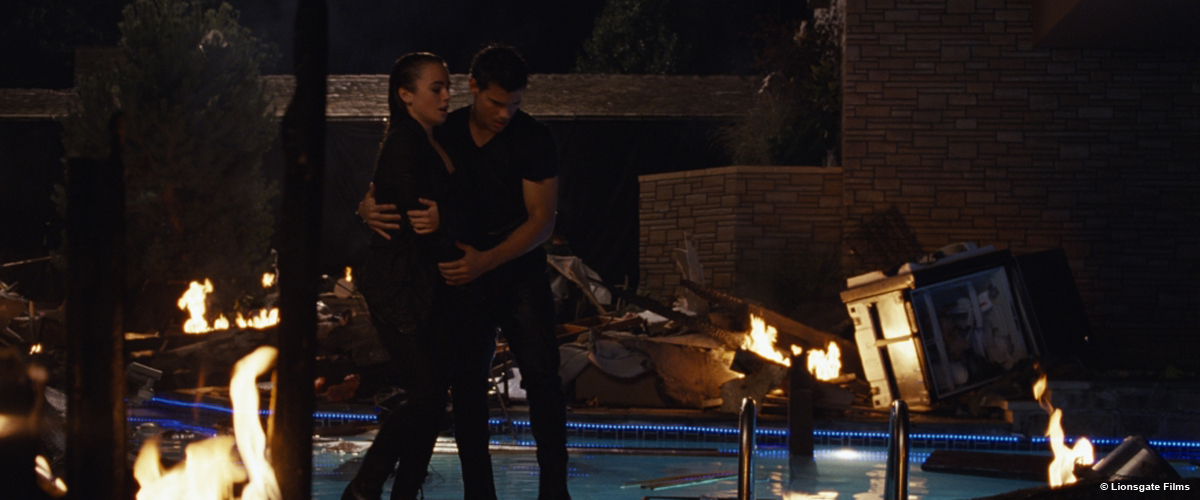 |
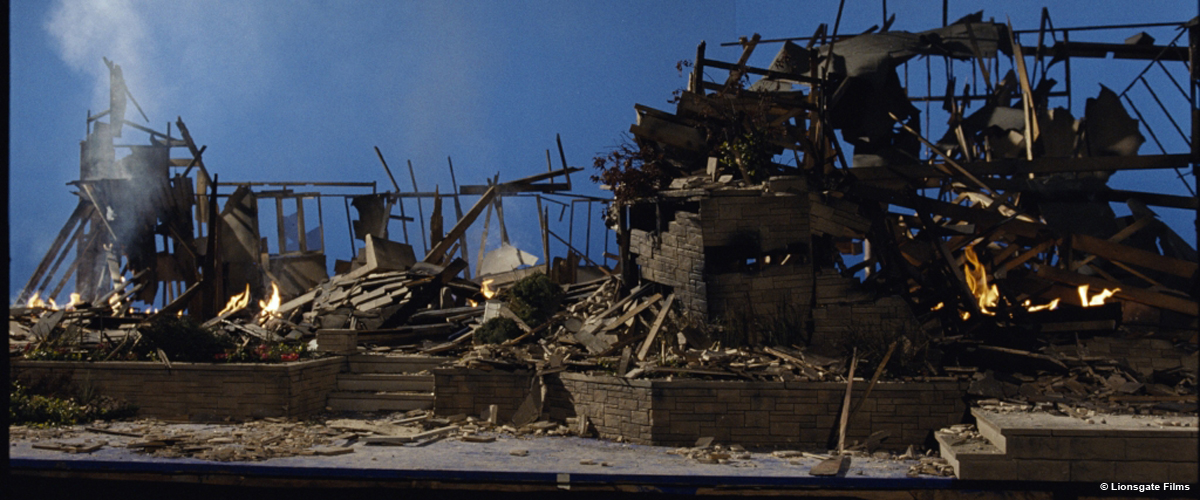 |
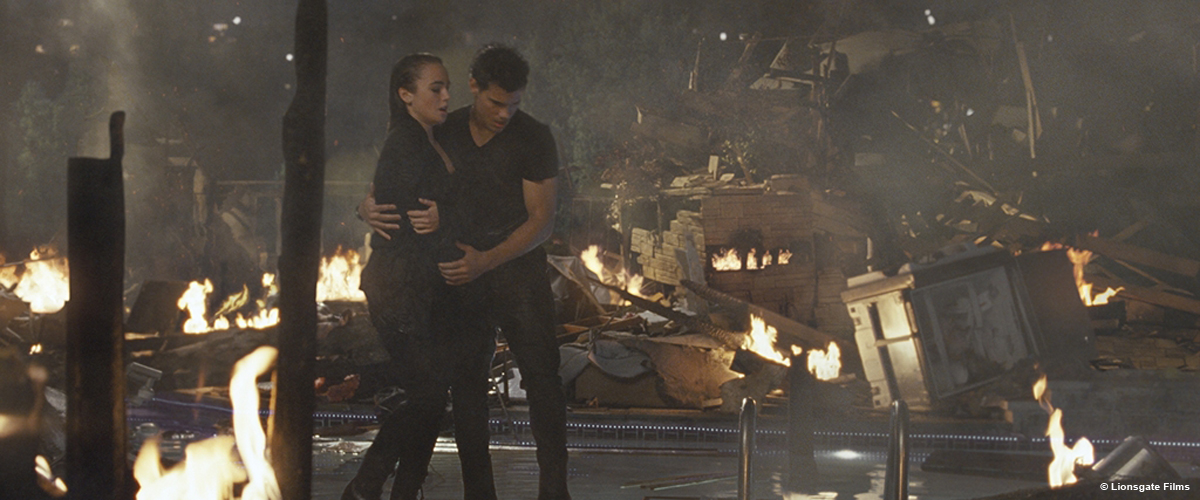 |
Was there a shot or a sequence that prevented you from sleep?
Haha – only everything at the start of the show…but once we started working down our ‘to do’ list, things got clearer and we knew we could do what needed to be done…
What do you keep from this experience?
We worked with a great team of people – on the Production side and at our company. Those relationships are the true value of any job.
How long have you worked on this film?
We started in November 2010 and finished in May 2011.
How many shots have you done?
We worked on 48 shots.
What was the size of your team?
We had six compositors, three CG artists and a matte painter… plus myself and the production staff of two.
What is your next project?
I moved directly onto TOWER HEIST at Method NY until September and then back to Method LA for NEW YEAR’S EVE which wraps today!
What are the four movies that gave you the passion for cinema?
Movies I watched as a kid: THE ADVENTURES OF ROBIN HOOD, SHE WORE A YELLOW RIBBON (any of the Ford/Wayne westerns during the « 4:30 Movie » Western Week), LAWRENCE OF ARABIA and STAR WARS.
A big thanks for your time.
// WANT TO KNOW MORE?
– Method Studios: Official website of Method Studios.
© Vincent Frei – The Art of VFX – 2011






